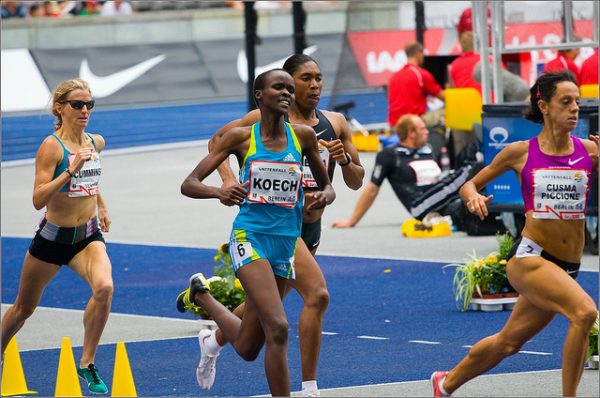
During PRIDE month Americans celebrate gender and sexuality spectrums, but many social arenas still rely on a rigid binary. Athletics is one of the spaces where gender segregation still dominates. In fact, its strict separation of sports into male and female competitions actually requires sport administrators to set and police the boundaries between the sexes and has created many controversies and conundrums in recent years. Sociological research illustrates how actors use gender verification, or sex testing, in athletics as a weapon of nationalism, sexism, and racism, thus reinforcing a medical view of the gender binary in an attempt to ensure “fair play.”
Gender verification in international athletics was part of the battlefield of the Cold War. Systematic sex testing in the Olympic Games began in 1968, largely in response to concerns about the dominant performances of the East German women and fears or rumors of men posing as women. In addition to being used as a weapon of nationalism, gender verification testing targeted athletes who did not conform to white, Western norms of femininity. Even after systematic sex testing was (briefly) eliminated by the International Olympic Committee in 2000, “suspicious” athletes such as the middle-distance runners Santhi Soundarajan and Caster Semenya were forced to undergo gender verification in 2006 and 2009.
- Stefan Wiederkehr. 2009. “‘We Shall Never Know the Exact Number of Men Who Have Competed in the Olympics Posing as Women’: Sport, Gender Verification and the Cold War.” The International Journal of the History of Sport 26(4): 556–72.
- Lindsay Parks Pieper. 2014. “Sex Testing and the Maintenance of Western Femininity in International Sport.” International Journal of the History of Sport 31(13): 1557–76.
Sport federations continue to defend gender verification of women — but not men — on the basis of “fair play,” or the idea that women competing against men face an unfair athletic disadvantage. Feminist scholars have critiqued the fair play reasoning as a smokescreen for the policing of women, especially as sex segregation and drug testing are two of the only ways that sport federations attempt to enforce a level playing field. Additionally, sex testing forces a medical definition of sex and draws sharp lines that punish individuals who are intersex, have chromosomal abnormalities, or have higher than average levels of androgens.
- Cheryl Cooky and Shari L. Dworkin. 2013. “Policing the Boundaries of Sex: A Critical Examination of Gender Verification and the Caster Semenya Controversy.” Journal of Sex Research 50(2): 103–11.
- Claire F. Sullivan. 2011. “Gender Verification and Gender Policies in Elite Sport: Eligibility and ‘Fair Play.’” Journal of Sport and Social Issues 35(4): 400-419.
How sex has been defined and verified has shifted as the medical understanding and technology available has advanced, but all gender verification methods will continue to struggle with how to fit the wide spectrum of gendered individuals into only two boxes.

Comments 1
Naomi Howell — November 16, 2018
To the ‘T’. I can really see where your coming from. Reading I feel more informed on another area in which Semenya case will impact in society. I’m a mans game some say there will never be level room for women.